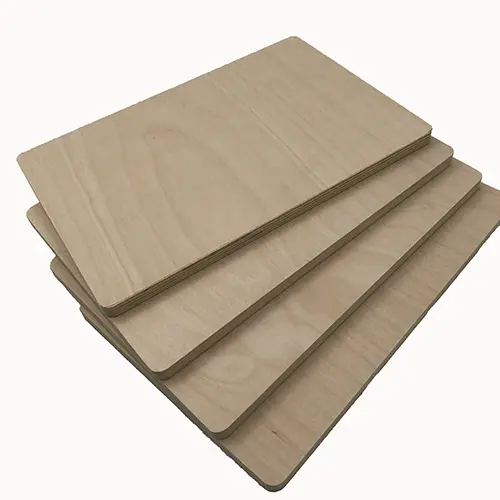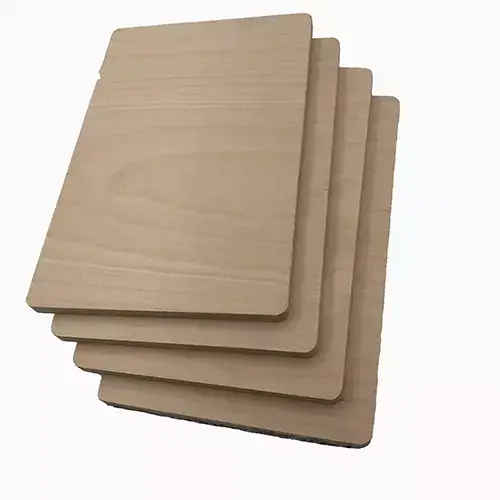1. Manufacturing Process of Birch Plywood
The process of manufacturing birch plywood begins with the harvesting of birch trees. The logs are debarked and then subjected to a rotary cutting process, where thin sheets of veneer are peeled from the log. These veneers are then dried to remove moisture and stacked in alternating grain directions to create stability.
The layers of veneers are glued together using high-pressure and temperature processes, which bond the layers securely. The most common method is hot pressing, where heat and pressure activate the glue, resulting in a strong and uniform panel. Some manufacturers apply additional surface treatments or coatings to enhance durability or improve moisture resistance.

2. Properties of Birch Plywood
Birch plywood is celebrated for its strength and durability. Due to its cross-laminated structure, it resists warping and splitting, which are common issues with solid wood. Its stability makes it ideal for applications requiring precision, such as cabinetry and furniture making.
The appearance of birch plywood is also a significant factor in its popularity. Birch has a pale, smooth surface with a fine, even grain that readily accepts stains and paints. This allows for versatility in finishing, whether the goal is to highlight the natural beauty of the wood or to match a specific interior color scheme.
In terms of stability, birch plywood performs well under various environmental conditions. However, like most plywood, it should be protected from excessive moisture to prevent swelling or delamination.

3. Grades of Birch Plywood
Birch plywood is available in a range of grades, which are classified based on the quality of the face and back veneers, as well as the presence of knots, splits, or other imperfections. Common grades include:
B/BB: This is the highest grade, with a smooth, defect-free face and a back that may have small patches or imperfections. It’s often used for cabinetry or furniture where the face will be visible.
BB/BB: Both the face and back may have some patches or imperfections, but the overall quality is still quite high. This grade is popular for more functional applications where the aesthetics are less critical.
CP/CP: A more economical grade with visible defects on both sides, typically used for structural applications or where appearance is not a priority.

4. Common Uses of Birch Plywood
Birch plywood is a versatile material used in a variety of applications, including:
Furniture manufacturing: Its strength and aesthetic appeal make birch plywood a popular choice for creating high-quality furniture, such as tables, chairs, and shelving units.
Cabinetry: The smooth, uniform surface of birch plywood is ideal for cabinets, especially in kitchens and bathrooms, where durability and resistance to warping are important.
Wall paneling: Birch plywood is also used for interior wall paneling, providing a sleek, modern appearance in homes and commercial spaces.
Flooring: Some grades of birch plywood are used as a base material for engineered hardwood floors, offering both strength and aesthetic appeal.

